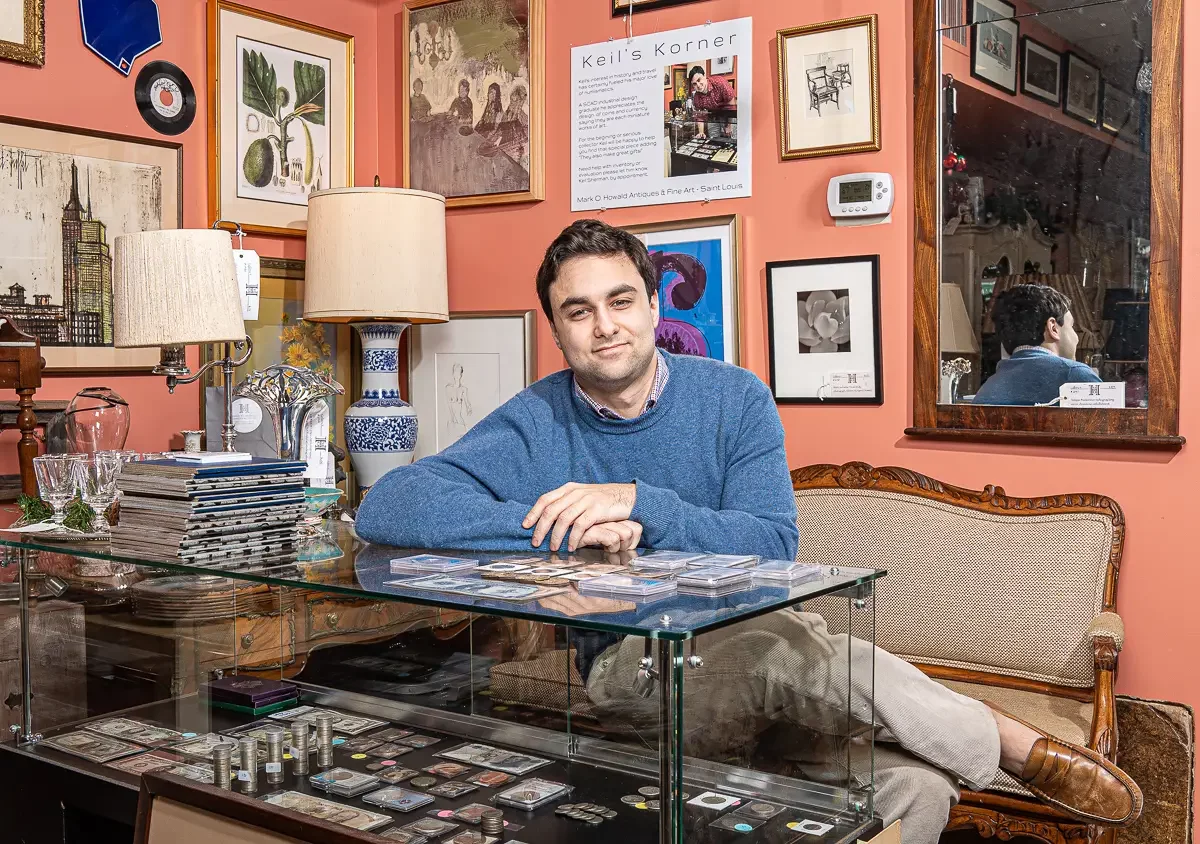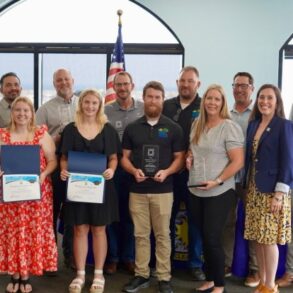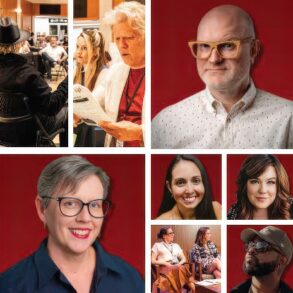
Keil Sherman remembers the joy of receiving gold coins from his grandmother, Jean Grossman, on his birthday. The coins, given to him throughout his teenage years, were from his grandmother’s family collection, and they sparked a passion in him that has carried into adulthood.
“The one that really piqued my interest was a Double Eagle that her father had kept hidden during the Roosevelt Administration,” says Sherman. “There was a law at the time that you couldn’t own gold—you had to turn it in, but I guess he didn’t. It was interesting to me to see that,” he says.
Now 27, Sherman has turned his passion into a business, selling rare coins and currency, and offering advisory services that include the purchasing and evaluation of other existing collections. Sherman, who grew up in St. Louis, works part time at Scotsman Coin and Jewelry, as well as at Mark O. Howald Antiques & Fine Art in Ladue, where he sells a selection of coins and currency out of a case in the back of the shop called “Keil’s Korner.”
Sherman approached Howald, whose friendship with his mother, Saint Louis Fashion Fund co-founder Susan Sherman dates back many years, to ask if he’d be interested in selling currency in addition to his curated selection of fine antiques. “He has taught me a lot,” Sherman says of his experience working alongside Howald.
But this isn’t Sherman’s first time venturing into the world of antiques. He spent time working in his cousins’ antique shops in New Orleans, cleaning antiques and absorbing as much information as he could about them. (The family has been in the business for more than 100 years.) That experience, along with a degree in Industrial Design from the Savannah College of Art & Design, are a natural fit for collecting and selling rare coins, and helped fuel his interest.
“To me, they look like little works of art,” he says. “There’s something about holding those pieces of history and you get to appreciate how much time and craftsmanship went into making each of them.”
Sherman notes that the dyes used to stamp the metal planchets were made by the finest artists of their day, each of whom competed among other artists for the opportunity to design currency for the U.S. government. His enthusiasm and respect for the artistry of currency is easy to see as points to the intricacies of each portrait and image on both coins and bills.
Throughout his college years, Sherman continued to expand his own collection. “I used to be obsessed with looking for old coins. I’d go to the bank and get rolls and rolls of every denomination and go through them looking for something cool and something old. I had some pretty good finds,” he says.
But his favorite item in his personal collection is a shiny Morgan Silver Dollar in average mint state grade.
“It may not be the rarest thing I have, but the reason I really appreciate this one is that it was minted in New Orleans, which is not known for having high-quality coins because of the weather down there. This is probably the most collectible American coin,” Sherman says of the Morgan, which was made from 1878 to 1904 and then again for a year in 1921.
Some of the unique offerings in his case at the shop include brightly colored antique Chinese bills decorated with the face of Chairman Mao Zedong, as well as a large sized U.S. dollar bill note, which ceased production in 1923 in favor of the current sized bills.
For young people who want to get into collecting, Sherman offers starter kits and his own expert advice. “I would start them with an album of coins where you just put them in the slots based on the date and mint mark,” he says. “These albums are for clad coins [such as copper and nickel] and people can find basically everything they need in their pocket change to complete them. You can also go to the bank and get rolls of coins and pluck out the dates you’re looking for. It’s fun to do and it teaches them how to save money.”
This post was originally published on this site be sure to check out more of their content








